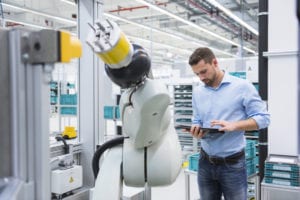One perk of working in IT is the occasional opportunity to peek into the crystal ball and see what the future holds. Recent news around the building of the world’s first climate positive data center in Falun, Sweden does just that, while offering valuable lessons around data center design and sustainability.
In February, Swedish energy company Falu Energi & Vatten and entrepreneurial firm EcoDC AB announced they would build the EcoDataCenter, an approximately 5.75 acre data center facility powered from only renewable energy sources, such as solar, wind, water and biofuels. In addition, heat generated by the data center—which would otherwise be wasted—will be used in the district’s heating and cooling systems for an overall environmental plus.
Schneider Electric will be supplying energy-efficient technology and solutions to this forward-looking project, based on our experience with building the sustainable data centers of today.
Not only will the EcoDataCenter be designed as environmentally positive, it will make no compromises in other areas, matching up to the highest safety and performance standards. Built to meet Uptime Institute’s Tier IV™ certification, which only 12 other data centers have achieved globally, the data center will boast exceptionally high performance, guaranteed uptime and maintain the highest possible security standards.
Tall orders, but they can be met with the right design, mindset and technology. After all, running green not only saves the environment, but also money.
Today, the ICT industry has tremendous power needs. It accounts for 10 percent of energy consumption globally, and just one data center can have the same electricity demands as a mid-sized municipality. With IT’s ever-growing role in business operations, increasing Internet penetration and the Internet of Things, this energy demand continues to climb exponentially. In fact, it’s expected that ICT will exceed the airline industry in CO2 emission of the airline industry by 2020.
Despite these trends, energy need has rarely been a design criterion in data center construction. Not only is this environmentally unsustainable, but it comes with a hefty price tag.
Over a data center’s life, electrical power costs can actually exceed those of the electrical power system and UPS — it can even exceed that of the IT equipment held inside it.
The whitepaper Implementing Energy Efficient Data Centers explores the numerous reasons behind this and the surprising costs that even a single kW hr of IT load or physical infrastructure can have over a decade.
Fortunately, as the whitepaper details, it’s a problem that can be easily rectified in design: simple no-cost decisions made during the design of a new data center can result in a savings of 20 to 50 percent off the electrical bill and more systematic efforts can cut up to 90 percent. Yes, you read that right. Nine-zero.
That’s why projects like EcoDataCenter are such a crucial peep into the future of all data centers. They show us how numerous design elements come together in aggregate to make remarkable differences around environmental sustainability and cost savings.
Although, in order to reap the financial and environmental rewards, key considerations must be made, along with a weighing of risks. In past blogs, for example, we’ve looked at how levering technologies like UPS Eco Mode Can Deliver Big Savings—between $100,000/year savings for a 1 megawatt (MW) IT load to almost $500,000 per year for 5 MW load in legacy data centers—but also the considerations that must be made around them.
The most important take-away for anyone looking to the EcoDataCenter for guidance and an example of forward-thinking design is that use of sustainable technologies and techniques result in real operational savings. It’s not a pipe-dream, it’s happening right now, in Sweden.
As Marc Nezet, Country Manager, Schneider Electric Sweden said when announcing our involvement in EcoDataCenter: “We live in an age when more and more people are concerned about the global data center industry’s environmental effects. Internet penetration and the Internet of Things don’t have to happen at the expense of the climate.”
Are you working toward a more sustainable, or even climate positive, data center of the future? Tell us about it in the comments below.



